Key takeaways:
- AI enhances programming by improving workflows, automating repetitive tasks, and providing real-time support, akin to a study buddy.
- Data quality is critical; poor data can derail projects despite the sophistication of AI models.
- Balancing ethical considerations and stakeholder expectations is essential during AI integration to foster trust and manage project timelines.
- Collaboration and diverse perspectives in AI projects can lead to innovative solutions and enrich the development process.
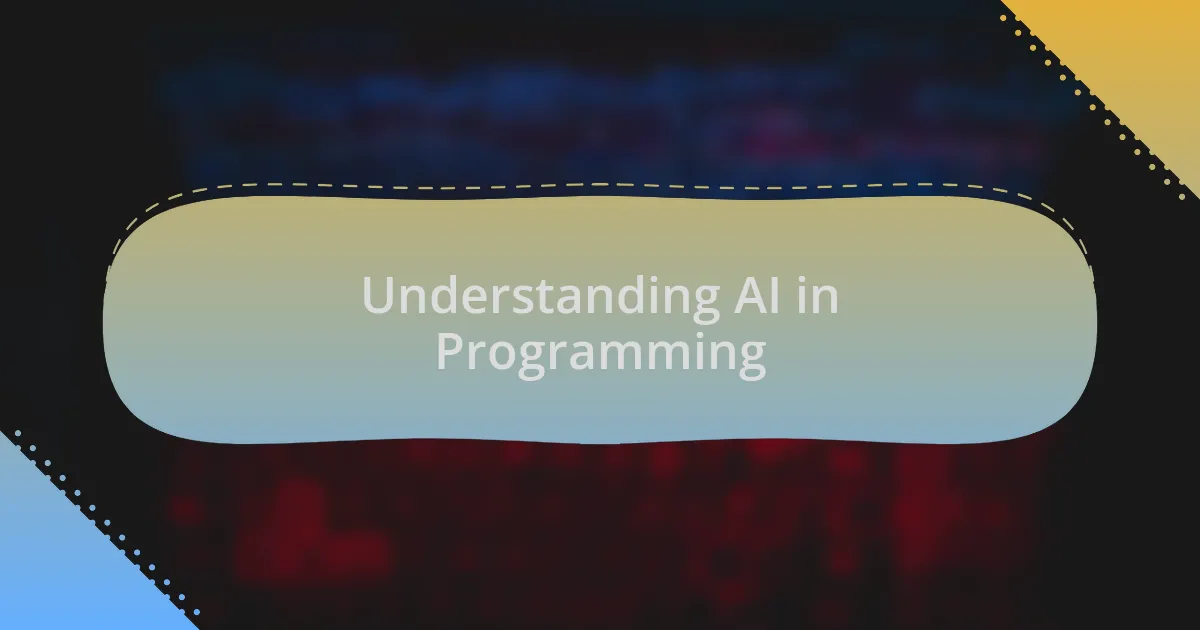
Understanding AI in Programming
Understanding AI in programming can seem daunting at first, but it’s really a powerful tool that can enhance our coding efforts and streamline workflows. When I first started experimenting with AI, I was surprised by how quickly it could analyze data and offer solutions, often faster than I could have on my own. Have you ever felt overwhelmed by a coding problem? AI can be like a study buddy that helps you work through complex issues in real-time.
As I delved deeper into AI, I discovered the importance of machine learning, a branch of AI that uses algorithms to learn patterns from data. It felt exhilarating to train a model that could recognize images or predict outcomes based on previous examples. Each breakthrough taught me not only about the technology but also about patience—transforming my frustrations into a more systematic approach to coding problems.
Incorporating AI into my projects has shifted my perspective. For instance, using tools like natural language processing helped me build chatbots that genuinely engage users. It’s fascinating how implementing AI has not only improved my projects but has also sparked a curiosity to learn more about the endless possibilities that AI offers in programming. Doesn’t it make you wonder what the next big innovation in coding will be?
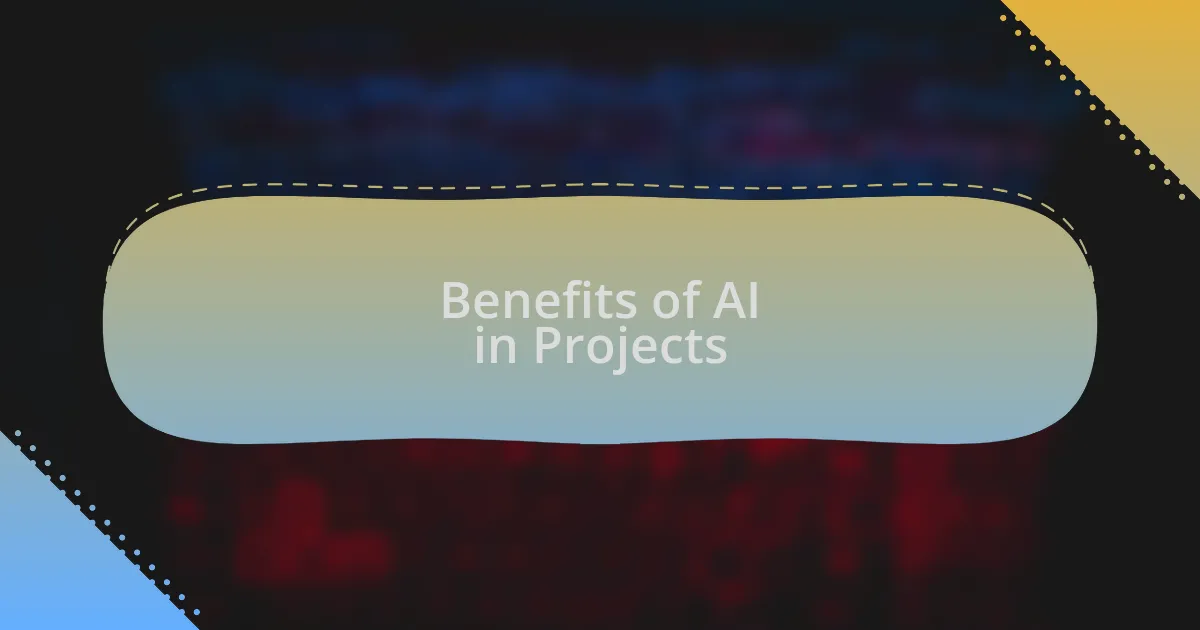
Benefits of AI in Projects
AI brings a multitude of benefits to projects that can significantly enhance outcomes. One of the most compelling advantages I’ve experienced is its ability to automate repetitive tasks. For example, in my last project, using AI to manage data entry freed up hours of my time, allowing me to focus on more creative aspects. Isn’t it liberating to have technology take care of the mundane?
Another notable benefit is improved decision-making. I remember a project where I utilized AI for predictive analytics. The model I created analyzed user behavior and helped me make informed decisions about feature prioritization. It was a game-changer—facing choices became less daunting when I had data backing my gut feelings. Have you had that moment when data turned uncertainty into clarity?
Moreover, AI fosters enhanced collaboration across teams. By integrating AI tools for communication and project management, I found that my colleagues and I could share insights and feedback instantly. This real-time collaboration not only boosted our productivity but also created an environment rich in innovation. When was the last time your team experienced that “aha!” moment together? It’s these shared breakthroughs that remind me of the power of collaboration.
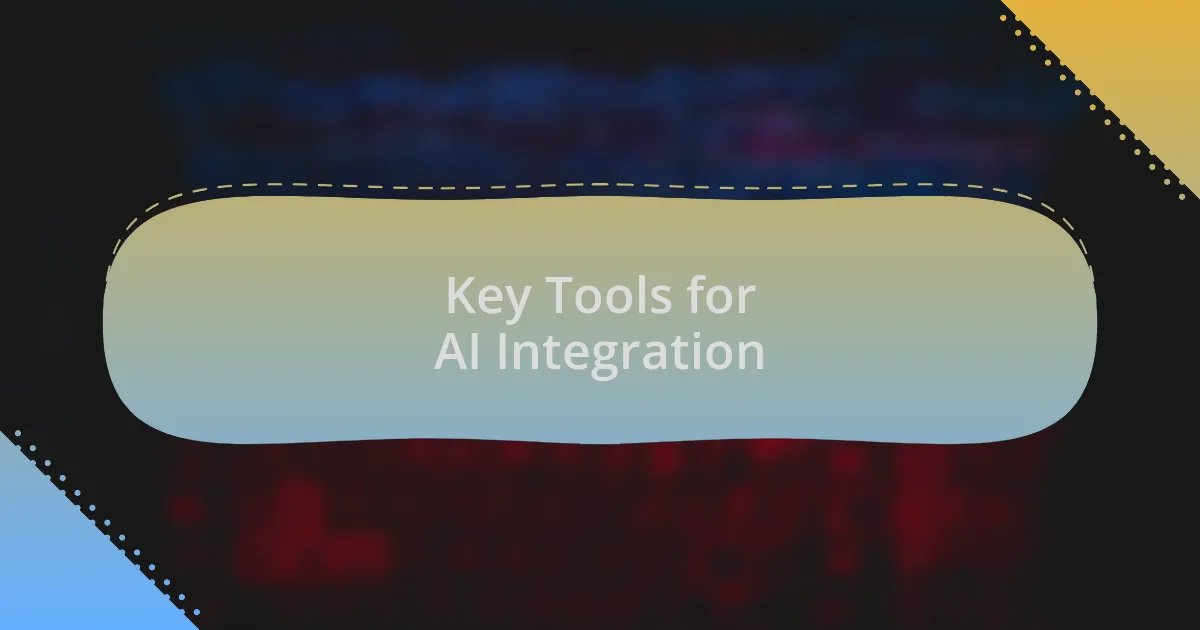
Key Tools for AI Integration
When diving into AI integration, there are several tools that have become my go-to resources. One standout for me has been TensorFlow, especially for machine learning projects. I remember working on a classification problem where TensorFlow’s robust framework enabled me to construct complex models efficiently. It was fascinating to see how the model I built began to accurately classify data, leaving me both excited and a little awestruck at the possibilities. Have you ever felt that thrill when your code comes to life?
Another tool worth mentioning is OpenAI’s GPT-3, which I’ve utilized for natural language processing tasks. Implementing it in a chat application project transformed user interaction; the conversations felt natural and engaging. I still recall the moment when I first tested it, and the AI responded with such relevance that it genuinely caught me off guard. Isn’t it incredible how AI can mimic human conversation so closely?
Lastly, I cannot overlook the significance of cloud platforms like Azure and AWS when integrating AI. Their scalability features have been essential in my projects, particularly when I needed to handle vast amounts of data. I once ran a predictive model that required significant computational power, and leveraging AWS made the process seamless. I felt relieved knowing I could scale my resources on demand—how do you cope when you need that extra push for your projects?
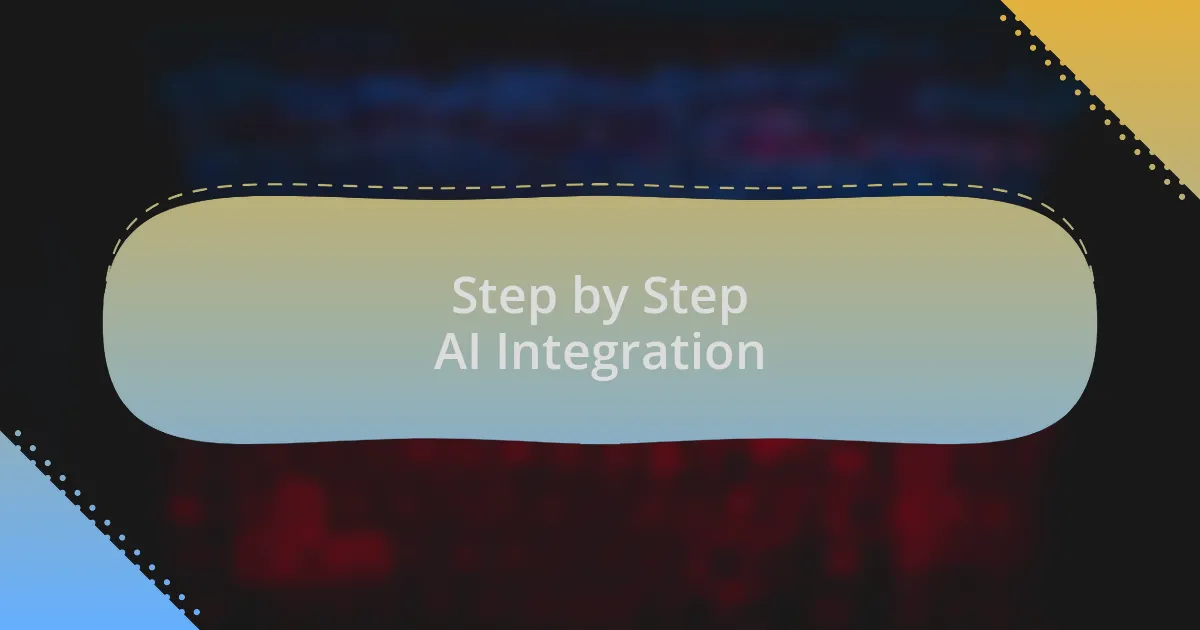
Step by Step AI Integration
When I set out to integrate AI into my projects, I found that the first step is conceptualizing the problem. I like to spend time brainstorming how AI can enhance the user experience or streamline processes. For instance, while working on a personal finance app, I realized that integrating AI to provide personalized budgeting tips could truly elevate the user journey—has there ever been a moment in your project where an idea just clicked like that?
After identifying the use case, I transitioned to selecting the appropriate AI tools and libraries. In one project, I opted for PyTorch, which allowed me to experiment with neural networks effortlessly. I remember the sense of empowerment I felt as I played around with different architectures, each time refining the model’s performance. Have you experienced that satisfying moment when your tweaks lead directly to improvements?
The final step in my integration process often entails rigorous testing and iteration. It was during the refinement phase of an AI-driven recommendation system that I noticed unexpected biases in the data. Navigating this challenge was frustrating yet eye-opening, as it reinforced the importance of continuous evaluation in AI. How do you address biases in your projects to ensure fairness and accuracy?
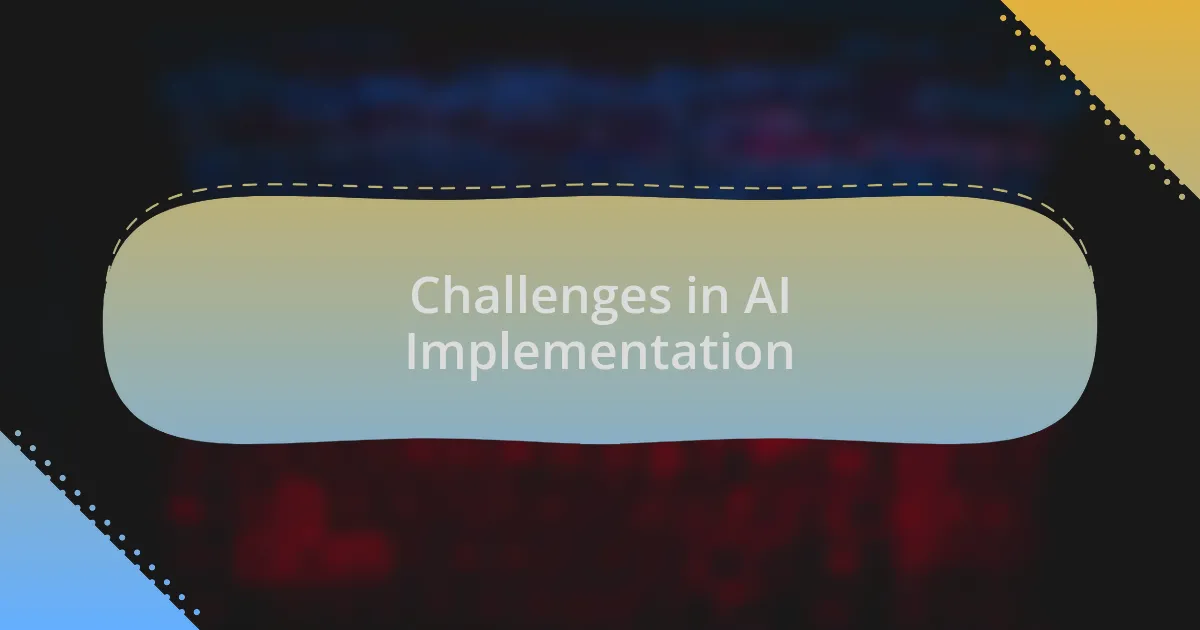
Challenges in AI Implementation
The challenges in AI implementation can often feel like navigating a complex maze. I remember struggling with data quality when I first started integrating AI. This hurdle was particularly daunting; no matter how sophisticated the model, if the data was inconsistent or incomplete, the results would never meet expectations. Have you ever faced the frustration of watching a project falter purely because the foundation wasn’t solid?
Another significant challenge I’ve encountered is managing stakeholder expectations. When I integrated AI into a client project, they had high hopes for instant results. It took considerable effort to communicate that building an effective AI system requires time and a lot of iterations. I still think about that delicate balance of educating others while keeping enthusiasm alive—how do you keep stakeholders engaged without overpromising?
Finally, the ethical implications of AI can be a tricky waters to navigate. I often think about data privacy and how our choices impact users. In one instance, I had to decide whether to include more personal user data to enhance a recommendation system. Ultimately, I chose to prioritize user trust over potential performance gains. How do you approach ethical considerations in your AI projects, and what guiding principles shape your decisions?
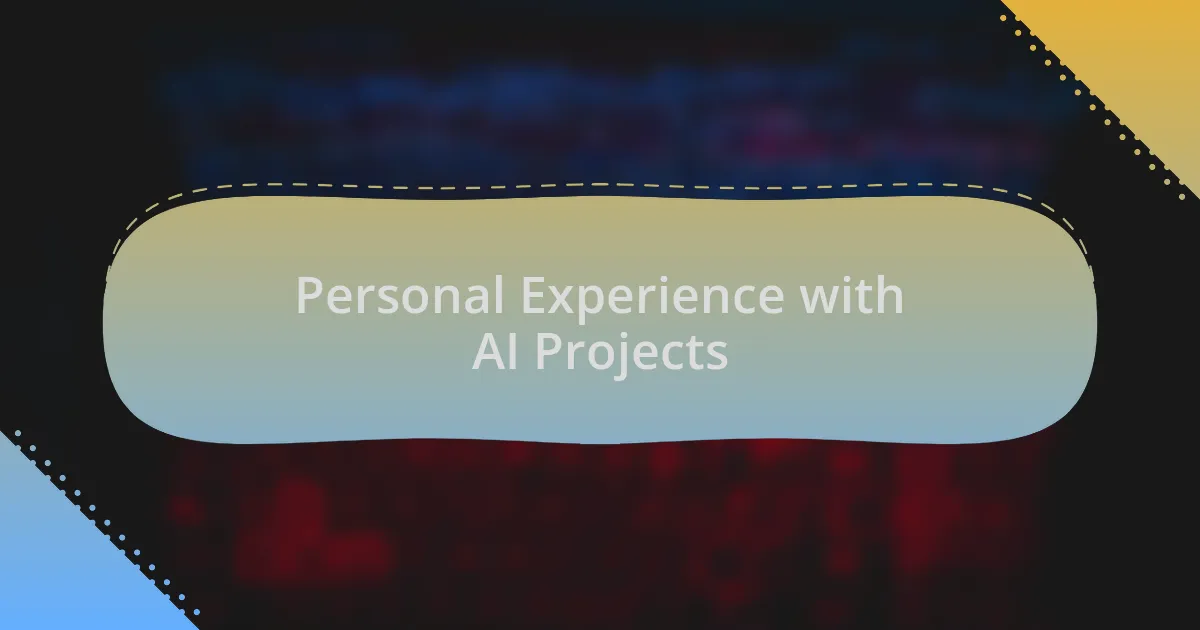
Personal Experience with AI Projects
As I ventured into my first AI project, I vividly recall the moment I realized the importance of choosing the right algorithms. Initially, I jumped headfirst into a popular choice without fully understanding its nuances. It felt like trying to fit a square peg into a round hole. Have you ever felt that sinking feeling when you realize you’ve miscalculated a key element of your project? That misstep taught me to assess the specific needs of each project before deciding on a technical approach.
Working on a chatbot project was truly a turning point for me. I was excited to create something that could provide instant support, but the real challenge emerged when users interacted with it in unexpected ways. Their feedback was a mix of hilarity and frustration, pushing me to rethink user experience. Isn’t it fascinating how user interaction can unveil insights we never saw coming? That experience taught me to embrace the iterative process while accepting that design is as much about listening as it is about building.
The collaborative nature of AI projects also stood out during my journey. Collaborating with data scientists and developers, I gained insights I hadn’t considered before. One brainstorming session left me inspired as we merged our ideas into a single vision—an exhilarating moment that underscored the power of teamwork. How often do we underestimate the value of diverse perspectives? I’ve come to appreciate that the best solutions often emerge when we listen to one another and build on our collective strengths.
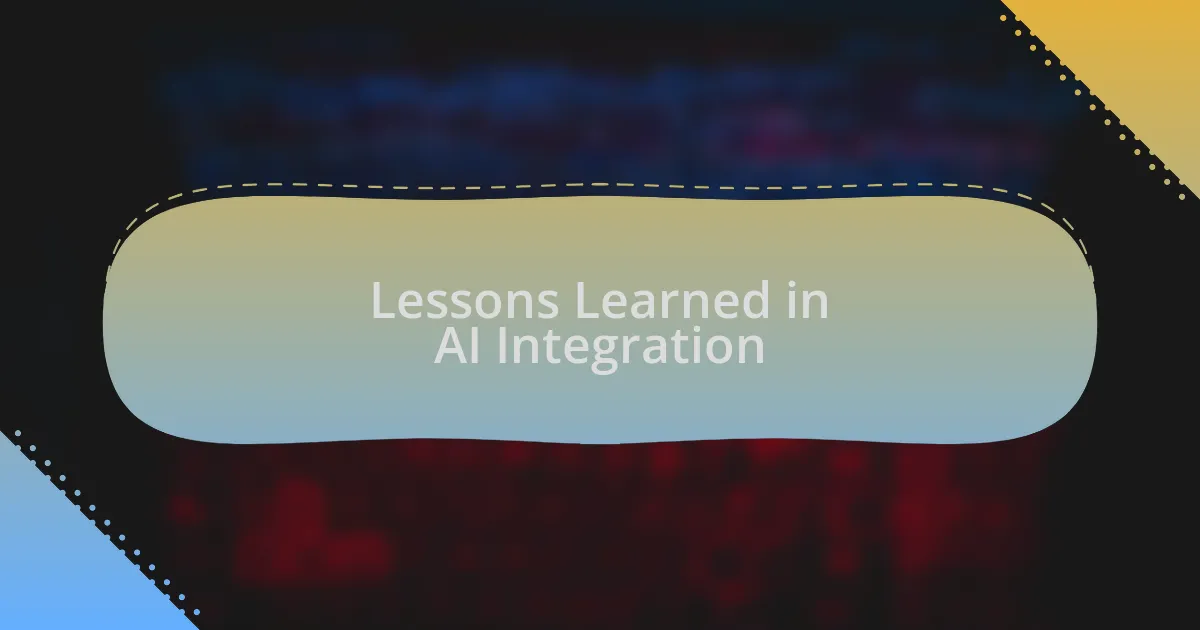
Lessons Learned in AI Integration
Integrating AI into my projects taught me that preparing for unexpected challenges is vital. I remember the day a machine learning model I was confident in just didn’t perform as expected during testing. That moment was deflating; have you ever faced a setback that made you question your entire approach? It reminded me that vigilance and flexibility are crucial—being ready to pivot when things don’t go as planned can turn a potential failure into a valuable learning experience.
One crucial lesson I learned was the significance of data quality. During a project where I used historical data to train my model, I overlooked some inaccuracies in the dataset. The results were disappointing, to say the least. It felt like building a house on sand—how could I expect stability? This taught me that spending time on data cleaning and validation is just as important as the model development itself.
Another eye-opener came from realizing the ethical implications of AI systems. While developing a recommendation engine, I was presented with a dilemma regarding user privacy. Balancing innovation with ethical responsibility can be a fine line to walk. Have you ever felt a weight on your conscience while pushing forward with a project? This experience instilled in me the necessity to incorporate ethical considerations from the very beginning, shaping not only better systems but also fostering trust with users.